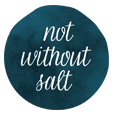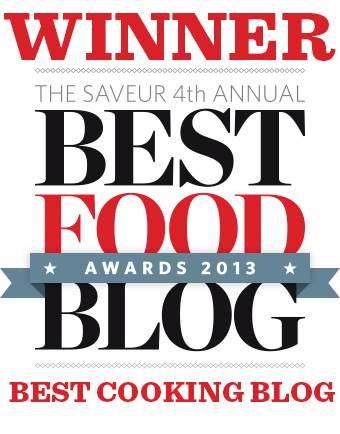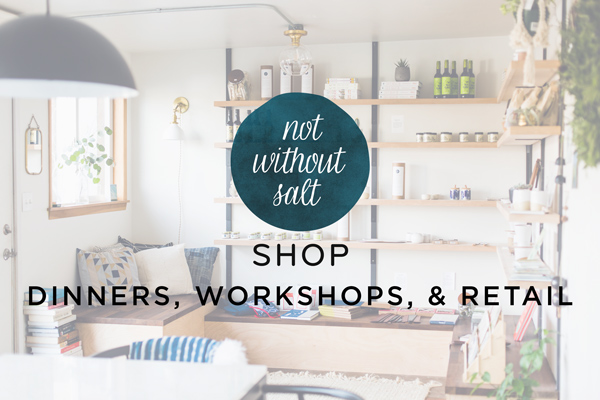Intro
Here are the notes from my class as promised. I will post the recipes soon but first you must understand the science behind the process.

With a basic understanding of the ingredients involed in pie and tart making then you can better access the problem if something does happen to go wrong and you can also work to develop your favorite dough by tweaking a few minor things.

I hope you enjoy these notes and learn something new!
PIE DOUGH
3 : 2 : 1
SOLID SOLID LIQUID
Flour Butter Water
Butter is tricked into thinking it is a solid – this ensures a flaky crust.
TART DOUGH
Liquid is replaced with sugar/eggs. Fat is incorporated (creamed) rather than being left in large solid pieces. This creates a crispy more cookie-like texture.
Creating the PERFECT PIE CRUST: tender, flaky and beautifully brown
FLAKINESS: fat remains solid, flat, large and cold
TENDERNESS: use low protein flour (or add a small percentage of cornstarch to all-purpose flour, fat keeps flour proteins separate
BROWNING: high protein content and sugar with low acidity browns faster
To achieve the PERFECT CRUST you must KNOW YOUR INGREDIENTS!
FLOUR: affects gluten formation, moisture absorption, and tenderness. Higher protein flour creates gluten more readily – dough becomes tough and chewy. If protein content is too low the crust will be too tender and impossible to roll out.
FAT: 1 1/3 cup flour to ½ cup (8 tbl.) butter Fat creates flaky layers, it also creates tenderness as it blocks moisture from being absorbed by the flour. A high fat crust is less likely to become soggy.
LIQUID: Connects the proteins in flour to create necessary gluten formation that holds the dough together. Liquids can also be a source of fat (cream) or acid (buttermilk). Vinegar is often added because of its ability to weaken gluten formation just enough so that the dough becomes much easier to roll out. It also adds and interesting depth of flavor.
SALT: Without salt your crust will taste flat.
BAKING POWDER: 1/8 tsp per cup of flour. Helps to counteract dough’s tendency to shrink. It also lifts, aerates and tenderizes. Adds a mellow flavor if you use a non-SAS powder such as Rumford. Tenderizing happens while baking so there is no fear of increasing the fragility when rolling and working with the dough.

MIXING: Practice Makes PERFECT!
• Keep ingredients cold
• Work quickly
• Keep fat solid and in large flat chunks
• Cut your butter into equal 1 inch pieces then freeze for 15-30 minutes
• Sift dry ingredients (can be done with a whisk) produces and more tender and lighter final crust.
• If using a food processor or stand mixer dough must still be finished by hand to that you can see and feel how the finished product will be.
• Bring the finished dough together into 1 or 2 (depending on type of pie) 5-6 inch discs. This makes rolling out a lot easier.
RESTING: Letting the dough chill out.
The finished dough needs some time in the fridge to chill. This allows the gluten to relax, the flour absorbs all the moisture and the butter gets nice and cold – ensuring a flaky crust. Dough that rests overnight shrinks less and holds a better shape while baking. At the minimum the dough should rest for 1 hour.
ROLLING:
Remove dough from fridge and allow to sit 10-15 minutes or until malleable.
Pound the dough with the rolling pin to flatten it out a bit. Work quickly and with a steady pressure. Lightly flour your work surface. You may apply a light flour coat to the actual dough and to the rolling pin as well. Roll from the center out until the entire thickness is about 1/8 inch. Occasionally you want to lift the dough to ensure that it is not sticking to the rolling surface. If the dough becomes to soft while working it pop it back into the fridge or freezer until firm.

BAKING:
Preventing Soggy Bottoms
Single-layer Crust
• Pre-bake then brush on a layer of egg whites, preserves or clarified butter
Double-layer Crust
• Bake on oven floor or pizza stone for 1 hour at 375* or 30 minutes at 425*
• Pre-heat oven for at least 20 minutes
• Use a dark, glass or ceramic pie pan
• Make sure to cut slits in the top crust so the soggy inducing steam has a place to escape
• Bake in a pre-heated hot oven at first to aid with creating a flaky crust
• Place a foil or parchment lined pan under the pie pan to catch inevitable drips
• Cover top crust or border with foil if it is browning too fast
• Always apply a wash to the top crust before baking. This creates a beautiful golden color and also and nice crisp top. (I use an egg wash that is 1 egg/ 1 yolk then sprinkle the entire top with granulated sugar.
• For fruit pies, let pie rest on a wire rack until just warm. This way the starch has had a chance to completely gel.
TIPS FOR SUCCESS: Things to remember when creating prize-winning pies
• Use good quality ingredients, especially high quality butter, as there is a hefty amount in these recipes.
• Keep your ingredients cold
• Remember color=flavor
• Brush off excess flour after rolling as it could have a bitter taste when baked
• For fruit pies the juices should be bubbling thickly to ensure that the final product will be adequately set
• If you spray your baking dish lightly with pan spray you should be able to un-mold the entire pie after it has completely cooled











What a great pie class! I’m still savoring the tastes of the best pie crusts ever, apricot raspberry pie baked to perfection, and fruit tart that melts in your mouth. all complimented by homemade ice cream and french press coffee. mmmm…….. A wonderful evening.
This is such a great tutorial on pie making! I’m going to print it out. I’ve never made a homemade pie crust because it’s always been so intimidating, but I’m going to give it a go now! Thank you!
I wanted to be in class, but alas, Tutu was the nanny. Ty and I made blackberry pie with your crust recipe. VERY flaky! Thanks.
MG ohhh I wish I was there to enjoy it!!
My mum hated the taste of pie crust so most of our pies were actually cobblers or crumbles.
About three or four years ago I decided to learn how to make pastry and was convinced by a friend to let her teach me…I’d never had one of her pies before, but she went on and on about how people LOVED her pies. We made a pie…the crust was…umm…bad:tough and rubbery.
Since then I had another friend talk me through how she makes pie and then Tamasin Day-Lewis’ and Dorie Greenspan’s books filled in the gaps.
Now I look for any excuse to make a pie 🙂
Thanks for the recipes you posted in your next upload..will bookmark it.
j
absolutely gorgeous!
That last picture is just superb!
Ms. Rodriguez,
I am doing a project on pie and was wondering if you could contact me to help out. You seem like the perfect person to talk to.
Alexa Trusty
Alexa – Please, call me Ashley. Did somebody say pie?! I’m happy to help.
All of those pies look amazing. I have never made a pie before. I think I am going to give it a try in a month for thanksgiving. Thanks for the tips.
tips that are always helpful 🙂 Thank you
What specific brand of butter do you like to use in your crust?
@TGirl – I really like challenge butter but sometimes it can be pricey so I’ve also used Darigold or Tillamook. In a dream world I’d always use a European butter such as Kerrygold or Plugra.
Thanks for the notes! I’m also trying to study up on the science behind pie (not so easy as pie after all…) before I bake my own, and this really helped!